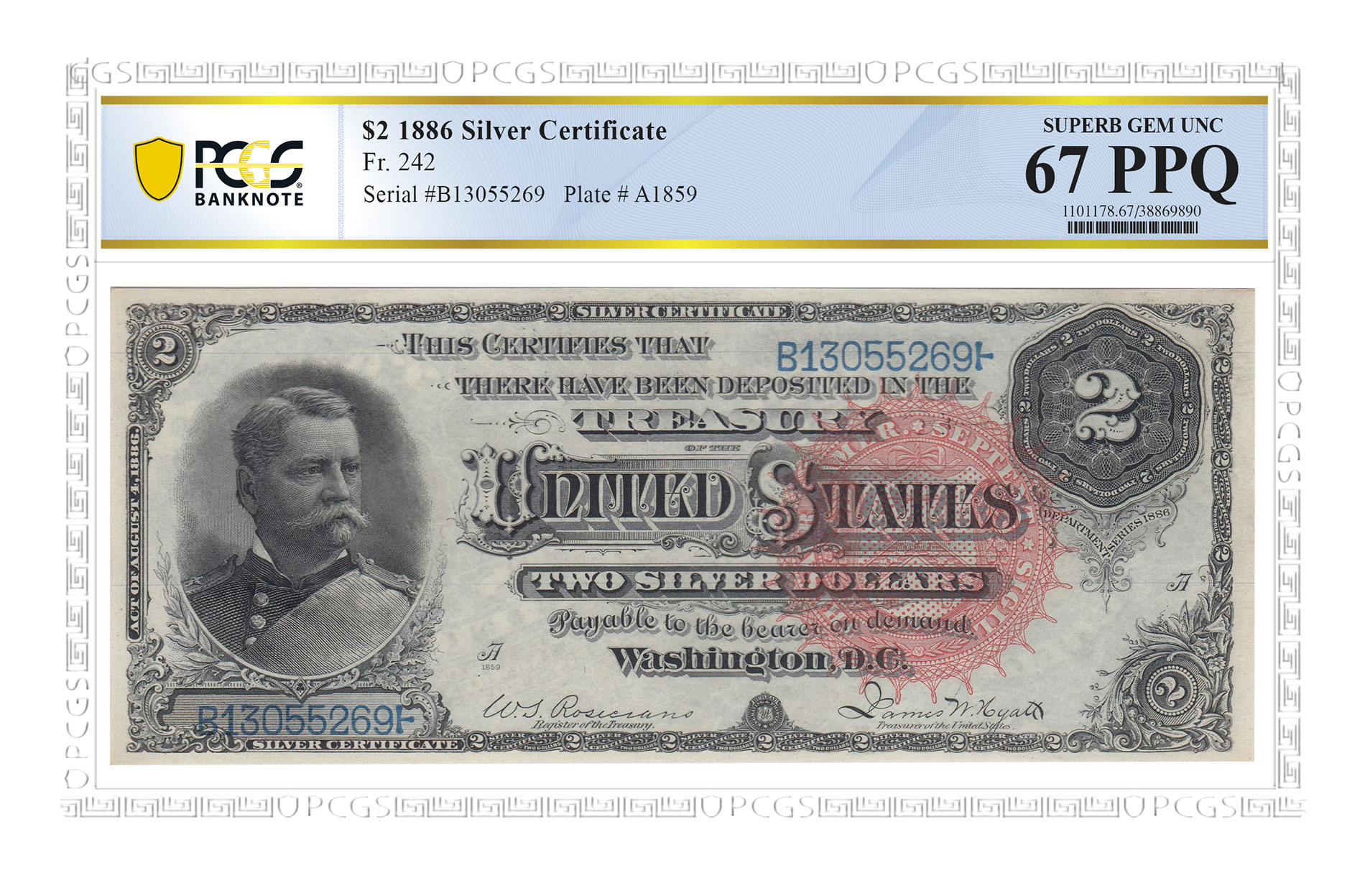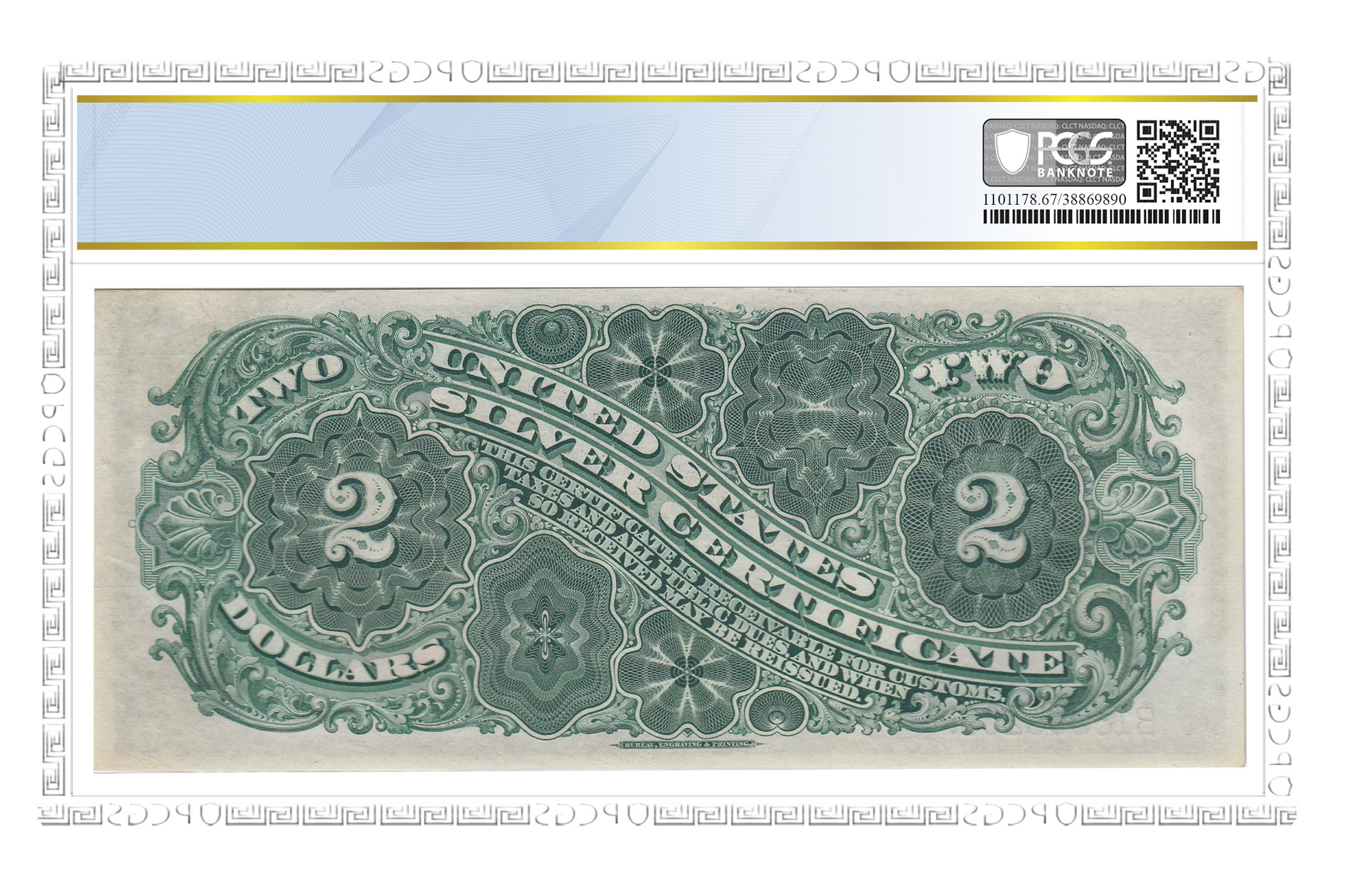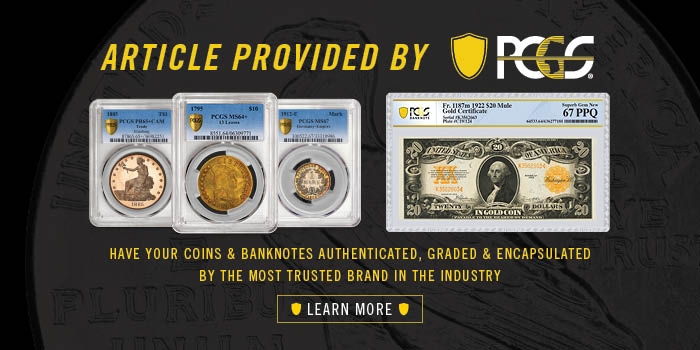By Cory Williams for PCGS ……
While Silver Certificates began in 1878, the Series of 1886 would be the first issuance of denominations smaller than $10. These lower denominations would see a lot of circulation given their smaller face values and the fact that they were frequently substituted for the heavy silver dollars that people didn’t like using in commerce.

Obverse of Series of 1886 $2 Silver Certificate. Superb Gem UNC 67 PPQ. Image courtesy PCGS
Along the left border of the face is printed “ACT OF AUGUST 4, 1886,” referring to an appropriations act that allowed Silver Certificates to be printed in denominations of $1, $2, and $5.
Also at the left is a portrait of General Winfield Scott Hancock. With a military career that spanned the Mexican-American War and the American Civil War, the General was considered a war hero worthy of being featured on U.S. banknotes.
In 1865 Hancock was tasked with supervising the execution of the Abraham Lincoln assassination conspirators, and in 1880 he ran for president as the Democratic nominee.

General William Scott Hancock 1880 Presidential Campaign Poster. Public Domain image
Hancock died on February 9, 1886, mere months before the act authorizing these banknotes was passed. So, his portrait was a logical choice.
The text known as the “obligation” on the face of the note reads:
THIS CERTIFIES THAT
THERE HAVE BEEN DEPOSITED IN THE
TREASURY
OF THE
UNITED STATES
TWO SILVER DOLLARS
Payable to the bearer on demand,
Washington D.C.
The back of the note, all in green, showcases an elaborate mixture of geometric designs, some reminiscent of flowers along with other plant life. In a serpentine layout is “UNITED STATES SILVER CERTIFICATE” and further legal tender text stating “THIS CERTIFICATE IS RECEIVABLE FOR CUSTOMS, TAXES AND ALL PUBLIC DUES, AND WHEN SO RECEIVED MAY BE REISSUED.”
At the bottom is the familiar printer logo “BUREAU, ENGRAVING & PRINTING.”

Reverse of Series of 1886 $2 Silver Certificate. Superb Gem UNC 67 PPQ. Image courtesy PCGS
Series of 1886 $2 Silver Certificates were printed during the tenure of three pairs of Treasury officials with their facsimile signatures affixed at the bottom of the banknotes. William Starke Rosecrans was Register of the Treasury during the entire printing. In succession, the Treasurers of the United States during this period were Conrad N. Jordan, James William Hyatt, and then James Nelson Huston, as these notes were printed as late as 1891.
The Treasury seal changed three times during this issue, from a small red seal, to a large red, and then to a large brown seal. Between these and the different signature pairs, there are a total of five different varieties of this issue recognized by the Friedberg catalog.
An estimated 21 million Series of 1886 $2 Silver Certificates were printed between 1886 and 1891, with just a minuscule fraction surviving today.
* * *





